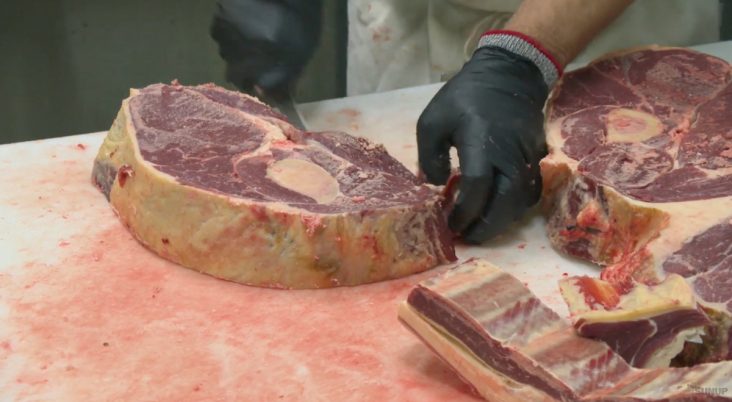Sizzling summer beef demand pushes prices higher
by July 6, 2021 12:57 pm 1,305 views

Beef prices typically increase following Memorial Day with more summer grilling demand but prices this year are trending higher than a year ago, according to Derrell Peel, livestock marketing specialist with Oklahoma State University Extension.
Peel said the seasonal increase in boxed beef cutout prices is higher than usual this year, with the weekly average “Choice” boxed beef prices rising 63.8% from early January to early June. Prices were higher across the board with loin cuts increasing 93%, rib meat up 60%, round rising nearly 44% and chuck cuts up 39% from the same period last year.
He said high demand across all food sectors is fueled by strong global exports, the uptick in food service inventory rebuilding and a robust seasonal U.S. demand. Peel said prices of boxed beef sold into retail peaked in early June, and have since come off of the $338.56 per hundredweight high to settle around $290.83 per hundredweight this past week. Peel said the latest weekly average “Choice” boxed beef prices are up 40.7% since early January, despite coming down from the high.
Year-to-date, values range from a 17% increase in rib meat for cuts like cowboy steaks and prime rib roasts to a 110.8% rise in short plate meat which includes skirt steak used in fajita and short ribs. Peel said the slight decrease in prices toward the end of June do not indicate weakening demand, but rather that food service operators had largely replenished their supply by early June.
“Beef demand typically moderates after July 4 through the mid-summer doldrums until another spurt of buying ahead of Labor Day,” Peel said.
He said demand for beef loin cuts tends to have different seasonal patterns. Peel said tenderloin demand is usually strongest in the winter, driven by white tablecloth restaurant demand but this year continued reopening and pent-up steak demand has pushed tenderloin prices to record high levels in June. He said strip loins are popular retail grocery steaks that typically peak ahead of summer grilling and have followed seasonal but stronger than usual increases thus far this year. Ribeye steaks tend to have broad-based demand in food service, retail grocery and export markets, Peel said. Ribeye prices rose to record levels in early June but have dropped more sharply than other middle meats in the past month, he said. Strong brisket prices this year reflect rebounding barbecue restaurant demand.
Peel said cuts like chuck roasts and round steaks tend to decline in the summer but this year prices have stayed elevated into July on broad-based food service demand and further processing demand to fill higher ground beef export orders. He said short ribs demand also remains high abroad which has kept those exports up.
“Domestic beef demand looks to continue strong in the second half of the year and beef exports are expected to increase as well. Strong beef demand and year over year decreases in beef production in the third and fourth quarters is expected to continue supporting wholesale beef values for the remainder of the year,” Peel said.
The U.S. Department of Agriculture (USDA) per capita meat consumption predictions for 2021 include 58.7 pound of beef, 50.8 pounds of pork, 97.9 pounds of chicken and 15.4 pounds of turkey. Estimates predict beef consumption in 2022 to dip 2.7%, while consumers eat 0.9% more pork and 2.1% more chicken and turkey combined. Peel said consumption numbers indicate consumers will eat what is available and affordable.
The USDA recently raised its 2021 forecast of beef production to 27.905 billion pounds, but said next year’s forecast was unchanged. USDA expects a 2% decrease in beef production in 2022 amid drought conditions and high feed costs. The report said other proteins from pork to chicken and chicken will see slight production increases in 2022, but it won’t be enough to offset the reduction in beef production. USDA predicts a slightly lower overall meat consumption per capita in 2022 at 223 pounds.
